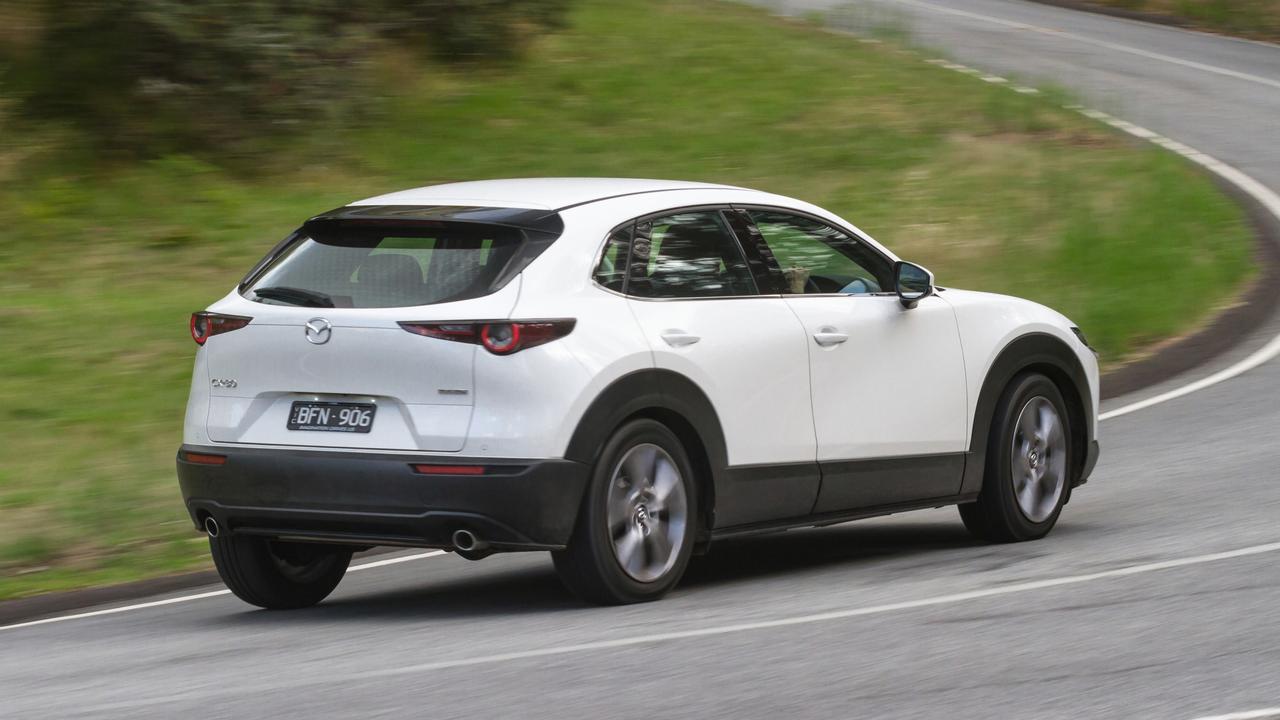2022 Mazda CX-30 M Hybrid review
Hybrids are all the rage these days as skyrocketing fuel prices drive buyers to look for more efficient machines.
Hybrids are becoming extremely popular, especially with skyrocketing fuel prices putting a strain on household budgets.
We test the hybrid version of Mazda’s popular CX-30.
IT’S A MILD HYBRID
Not all hybrids are created equal.
The two main hybrids on the market are self-charging versions used in a wide range of Toyotas, and plug-in hybrids that allow owners to drive on pure electric power for about 50 kilometres.

Mazda’s CX-30 M Hybrid uses a third type dubbed “mild hybrid”. The more common hybrid technologies greatly reduce fuel use, but the mild hybrid technology used in the CX-30 is less effective.
The 24-volt system, which consists of a small battery and motor, is mainly used to restart the engine when you come to a stop. This ensures a better transition from stop to start and makes for a smoother takeoff.
It saves about 0.2L/100km compared to the petrol-powered version.

SAFE AS HOUSES
Mazda poured safety features into the CX-30.
The CX-30 will brake automatically if it detects a potential collision with a car, pedestrian or cyclist.
A combination of hi-tech features will help to keep you centred in your lane. It’ll even tug the steering wheel gently to direct you back into place if it detects you wandering.
The safety tech will alert you if a car is in your blind spot and it’ll sound the alarm if a car approaches from the side as you reverse.
Mazda also throws in seven airbags, radar cruise control, a driver attention warning and a bird’s-eye view camera as standard.
AGEING BEAUTY
Mazda blew mainstream competition out of the water almost a decade ago with luxury-lined interiors featuring soft-touch materials and elegant design.
Not much has changed since then and the competition has caught up.
The build quality is still there, but Mazda’s once-remarkable interior is starting to feel outdated.

The instrument cluster features a mix of analog dials and a small low-res information display compared to fully digital dashes of rivals. It does win back points for a head-up display that projects key information onto the windscreen.
The brand’s 8.8-inch infotainment screen is long and thin while rivals provide bigger, squarer displays.
CHEAP TO RUN
The CX-30 is one of the cheaper small SUVs to run.
A simpler naturally aspirated engine drinks 6.4L/100km. This is more than turbocharged rivals, but it only requires cheaper regular unleaded or E10 fuel compared to premium fuels needed by rivals.
An industry-standard five-year/unlimited km warranty provides peace of mind and an affordable capped-price servicing program costs $1732 over five years. Most services are $328 a pop, with the most expensive coming in at $374.

THERE’S PLENTY OF CHOICE
The CX-30 M Hybrid is priced at about $40,000 drive-away, but if it doesn’t suit you there is a vast range of CX-30s to choose from.
Prices range from $33,400 for the entry-level G20 Pure grade fitted with a manual transmission and rise to almost $53,000 for the range-topping X20 Astina.
Buyers can choose between a 114kW/200Nm 2.0-litre petrol engine or a beefier 2.5-litre unit that boosts outputs to 139kW and 252Nm.
If you opt for the bigger engine you can choose between front-wheel or all-wheel drive.
The range-topping X20 Astina gets a hi-tech petrol engine that uses compression technology instead of spark plugs to help reduce fuel use. This engine works in the same way as a diesel and is the first mainstream application of this tech in the world.




